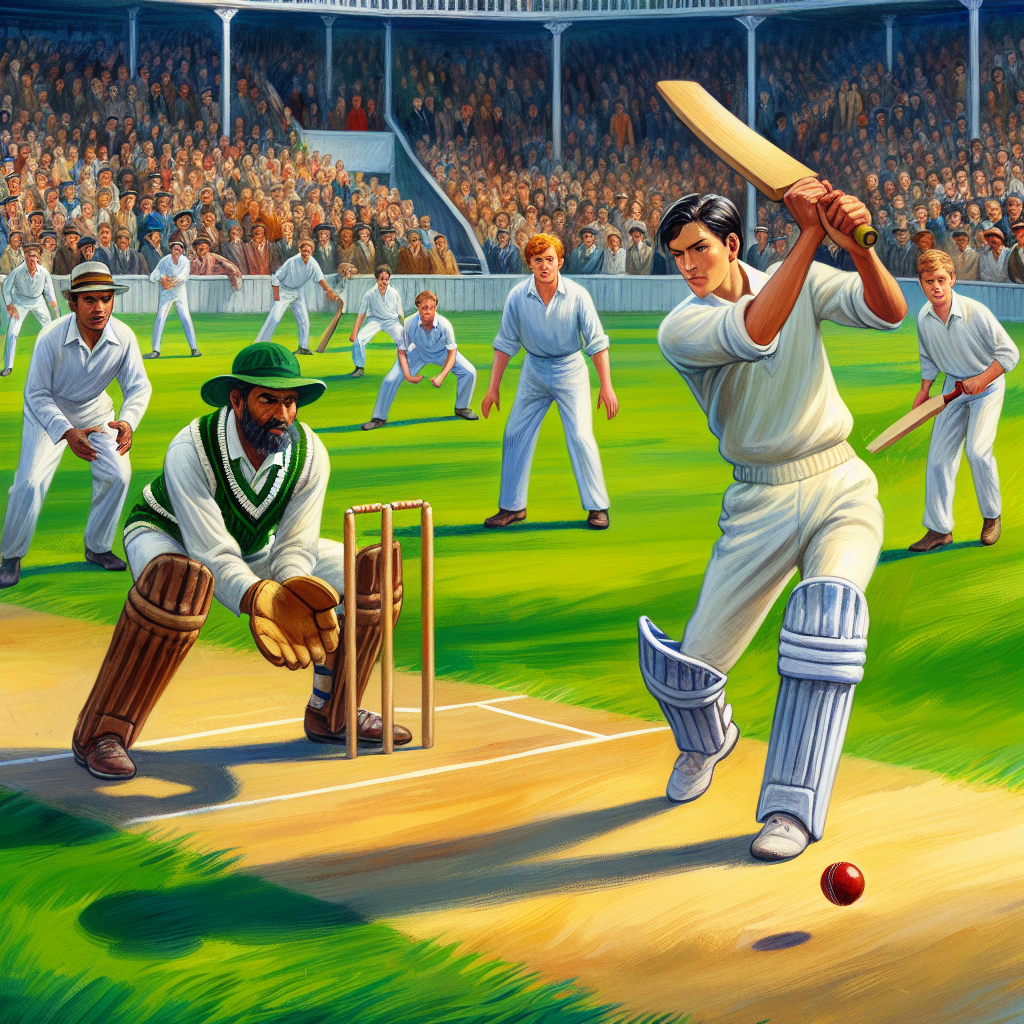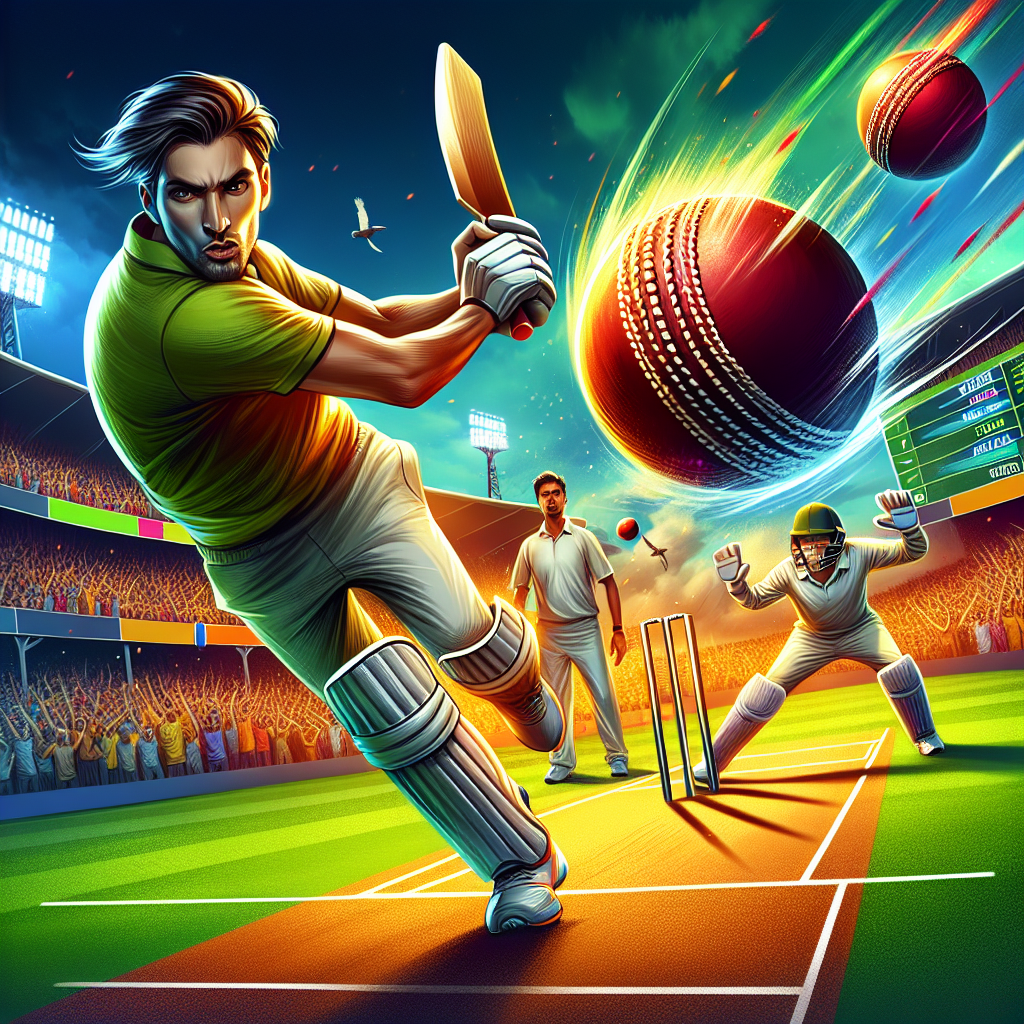The Evolution and Impact of Cricket: A Comprehensive Exploration

Cricket, often referred to as a gentleman’s game, has evolved from its humble beginnings into a global phenomenon. With its rich history, diverse formats, and passionate fan base, cricket has become more than just a sport; it is a cultural staple in many countries. This article delves into the evolution of cricket, its various formats, the economic impact, and its role in fostering international relations.
The Historical Roots of Cricket
The origins of cricket can be traced back to the 16th century in England. Initially played by children in the Weald, a region in South-East England, cricket gradually gained popularity among adults. By the 17th century, it had become a well-organized sport with established rules.
The Birth of Modern Cricket
The 18th century marked a significant turning point for cricket. The establishment of the Marylebone Cricket Club (MCC) in 1787 and the introduction of the Laws of Cricket laid the foundation for the modern game. The MCC became the custodian of cricket laws, ensuring uniformity and fairness in the sport.
The Formats of Cricket
Cricket is unique in its variety of formats, each offering a different experience for players and spectators alike. The three primary formats are Test cricket, One Day Internationals (ODIs), and Twenty20 (T20) cricket.
Test Cricket: The Ultimate Test of Skill
Test cricket is the oldest and most traditional format, played over five days with each team having two innings. It is considered the pinnacle of cricket, testing the endurance, skill, and strategy of players. Iconic series like The Ashes between England and Australia have captivated audiences for over a century.
One Day Internationals: A Balance of Skill and Entertainment
Introduced in the 1970s, ODIs revolutionized cricket by condensing the game into a single day. With each team playing 50 overs, ODIs strike a balance between the strategic depth of Test cricket and the fast-paced excitement of T20s. The ICC Cricket World Cup, held every four years, is one of the most prestigious tournaments in this format.
Twenty20: The Modern Face of Cricket
T20 cricket, the newest format, has transformed the sport with its high-octane action and entertainment value. Each team plays 20 overs, making it a fast-paced game that appeals to a broader audience. The Indian Premier League (IPL) is a prime example of T20’s success, attracting global talent and massive viewership.
The Economic Impact of Cricket
Cricket is not just a sport; it is a significant economic driver in many countries. The sport generates substantial revenue through broadcasting rights, sponsorships, and merchandise sales.
Broadcasting Rights and Sponsorships
Cricket matches, especially international fixtures and major tournaments, attract millions of viewers worldwide. This has led to lucrative broadcasting deals, with networks paying billions for the rights to air matches. Sponsorships from global brands further boost the sport’s financial ecosystem.
The Indian Premier League: A Case Study
The IPL is a testament to cricket’s economic potential. Since its inception in 2008, the league has grown exponentially, with franchise valuations reaching billions of dollars. The IPL’s success has spurred the creation of similar leagues in other countries, further expanding cricket’s economic footprint.
Cricket as a Tool for International Relations
Cricket has often played a role in diplomacy, fostering goodwill and understanding between nations. The sport has been used as a platform for dialogue and reconciliation, transcending political and cultural barriers.
Cricket Diplomacy: India and Pakistan
The cricketing rivalry between India and Pakistan is one of the most intense in the sport. Despite political tensions, cricket matches between the two nations have served as a means of soft diplomacy, bringing people together and promoting peace.
Cricket’s Global Reach
Cricket’s popularity extends beyond traditional strongholds like England, Australia, and the Indian subcontinent. The sport is gaining traction in countries like Afghanistan, Ireland, and the United States, showcasing its potential to unite diverse cultures and communities.
The Future of Cricket
As cricket continues to evolve, it faces both opportunities and challenges. The sport must adapt to changing audience preferences, technological advancements, and the need for sustainability.
Technological Innovations
Technology is playing an increasingly important role in cricket. Innovations like the Decision Review System (DRS), Hawk-Eye, and Snickometer have enhanced the accuracy of umpiring decisions, improving the overall quality of the game.
Sustainability and Inclusivity
Cricket must address environmental concerns and promote inclusivity to ensure its long-term viability. Initiatives like reducing the sport’s carbon footprint and promoting women’s cricket are steps in the right direction.
Conclusion
Cricket’s journey from a pastime in rural England to a global spectacle is a testament to its enduring appeal. The sport’s rich history, diverse formats, and economic impact make it a unique cultural phenomenon. As cricket continues to grow and adapt, it will undoubtedly remain a powerful force for unity and entertainment worldwide. Whether through thrilling matches, economic contributions, or diplomatic efforts, cricket’s influence is undeniable, and its future looks promising.



